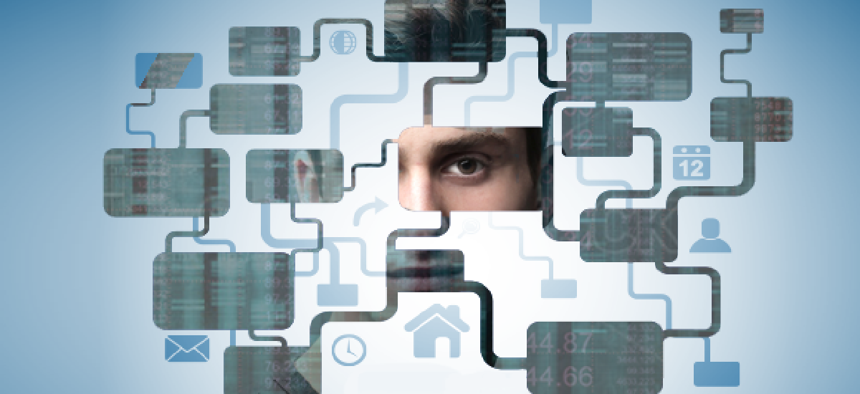Prepare for the next Sunburst by protecting controlled unclassified information
Protecting the supply chain and CUI will only become more challenging as the number of defense contractors and the amount of data they house continues to increase.
As the ramifications of last year’s devastating Sunburst attack on SolarWinds' Orion software linger, the National Institute of Standards and Technology and the Department of Defense have implemented stringent new guidelines and requirements for federal contractors working with controlled unclassified information (CUI). NIST SP 800-172 provides clear guidance for damage-limiting operations, including network segmentation, and DOD now requires third-party assessments and validation for vendors to meet Cybersecurity Maturity Model Certification (CMMC).
CUI has long been an appealing target for the nation’s adversaries. It’s sensitive by its very nature, and the fact that it’s not classified means that organizations have historically not been as vigilant in protecting it. In addition, many of the government’s key suppliers lack the scale and means to implement costly and complex cybersecurity measures. This combination of factors makes CUI a ripe target for exploitation and compromise.
Now, the government’s renewed emphasis on supply chain cybersecurity and protection of CUI, requires contractors to strengthen their defense mechanisms. Here are three strategies they should consider implementing.
Segregate data
One of the lessons taught by the Sunburst incident is how easy it can be for hackers to move from one dataset to another once they’re inside a network. A single backdoor into SolarWinds’ network led to the compromise of nine government agencies and about 100 private sector companies, according to Anne Neuberger, deputy national security advisor for cyber and emerging technology.
The incident highlighted the need to segregate data to mitigate the potential for hackers to gain access to information -- the “damage-limiting operations” referred to in NIST SP 800-172. Systems that store or process CUI should be isolated from other network components, and access to CUI should be highly controlled.
This is a clear challenge in today’s interconnected, on-demand and data-centric world. But technologies like data diodes, which provide secure one-way data transfer between networks, and cross-domain security, which segments network environments, can allow secure information sharing between privileged users. These technologies provide the connectivity required for modern government operations while ensuring the protection of critical data and networks. They can also make it significantly harder for hackers to gain access to different datasets and traverse networks.
Implement behavioral analytics
With behavioral analytics, organizations adopt a zero-trust approach and monitor users for anomalous patterns that could indicate a potential breach. For example, if a Washington, D.C.-based user’s credentials are suddenly being used by an unknown party out of New York City, the user may have been compromised. Other deviations from the user’s normal behavior patterns could also indicate an insider threat.
Behavioral analytics are based on scores indicating a user’s risk to the enterprise. A person with direct access to CUI, for instance, might have a higher risk score and be subject to more stringent security controls or access privileges. This tactic enables organizations to focus their efforts on the areas of greatest impact, reducing cost and improving efficacy.
Although most defense agencies already use some form of behavior analysis as part of their security protocols, the same cannot necessarily be said across the DOD’s supply chain. Agencies should encourage contractors to incorporate behavioral analytics into their security plans to minimize any potential risk that might arise from their employees.
Build trust
Although the Sunburst attack highlights the potential threats posed by the private-sector supply chain, there are many more examples of successful cybersecurity collaborations between the government and industry. For instance, the U.S. Cyberspace Solarium Commission, which has brought together the brightest minds from government, industry and academia, is an excellent case study of the whole of the United States, including both public- and private-sector organizations, coming together for a common cause.
The security of the government and its critical supply chain depends on adopting a similar mentality to that which created the commission; that is, organizations must build trust and work together to identify and understand the common risks before them. Agencies must share threat intelligence with their private-sector contractors, including details around cyber intrusions and the latest tactics hackers may employ against the supply chain. This information will help their contractors better prepare and defend their networks. Likewise, contractors must be transparent about their development practices and immediately alert agencies to any potential activities that may indicate a threat to those networks.
Protecting the supply chain and CUI will only become more challenging as the number of defense contractors and the amount of data they house continues to increase. Implementing these best practices today will help bolster defenses significantly, allowing third parties to meet the requirements set forth by the federal government and reduce the chances for another Sunburst-level attack.
This column was changed May 5 to clarify the composition of organizations hit by the SolarWinds attack.




